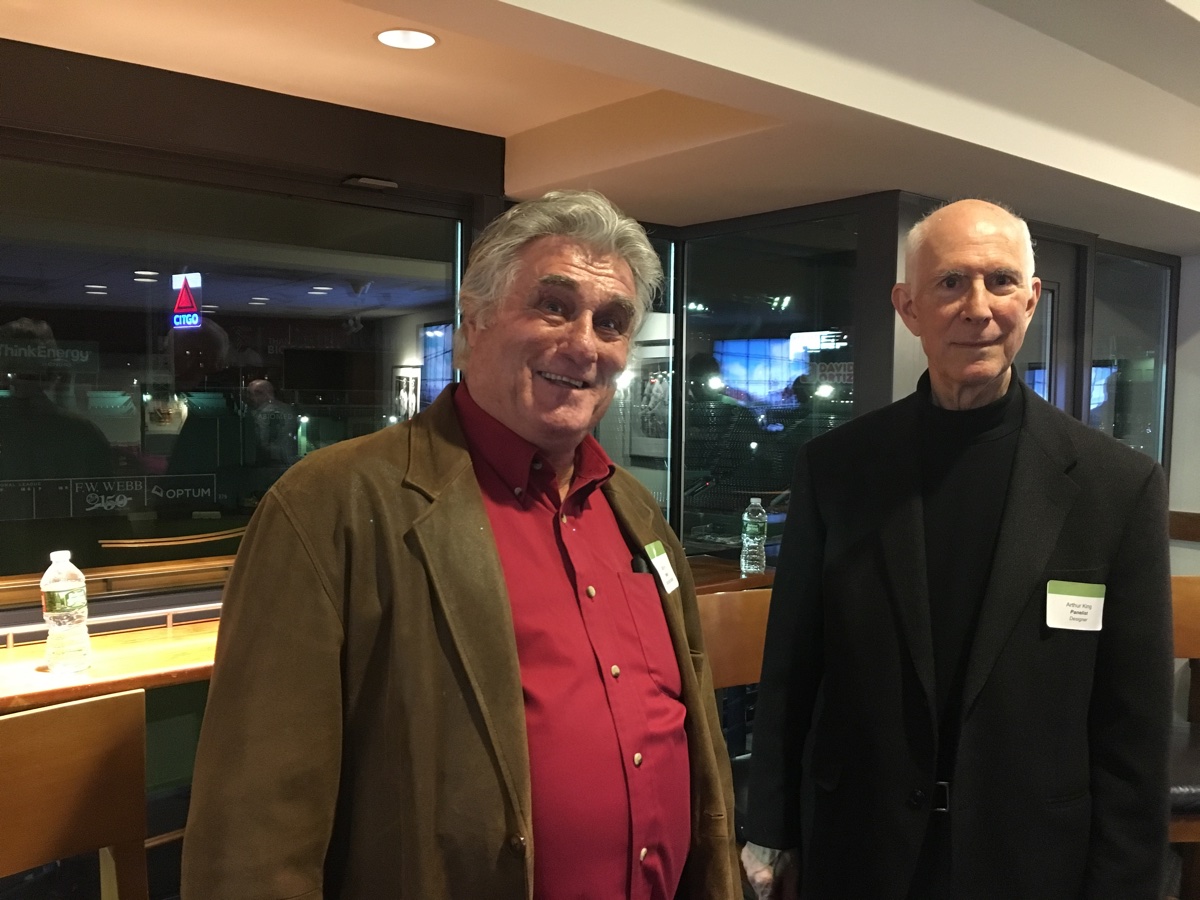Citgo Sign’s Designer, Keeper, and Crusader Gather at Fenway Park

Foley and King. Photo by Kyle Clauss
For nearly 40 years, Marty Foley used a rickety wooden swing to scale the 3,600-square-foot sign Arthur King designed for a newly rebranded oil company. When one of the neon tubes went out, Foley touched the tip of his trusty screwdriver to one end to check for a charge. In the event of a blizzard, he’d warm his hands by gripping the ropes of his swing as he rappelled down the side of the darkened Citgo sign.
The two men couldn’t be more different. Foley talks bluntly about Acme transformers in a raspy Boston brogue, while the urbane King, dressed in all black, waxes philosophical with a Transatlantic flourish about the rationale behind the Citgo sign’s rounded corners. But in a Fenway Park luxury box Tuesday night, with their sign dutifully filling and depleting in the pattern King designed back in 1965, they made the case for preservation.
“Its impact on Boston, I did not anticipate,” King said. “But I’m pleased that it’s still there, and it’s a landmark in my own career.”
The Citgo sign’s future was made uncertain after Boston University, the prime mover in Kenmore Square’s transformation from the center of the city’s punk scene to an upscale anteroom for its Comm. Ave. campus, sold the building beneath it to local developer Related Beal this summer. The air rights for the sign were not included in the deal, and neither side has committed to keeping it.
Foley and King were joined by Greg Galer, executive director of the Boston Preservation Alliance, who led the campaign earlier this year to begin the landmarking process for the Citgo sign. The Alliance’s petition garnered more than 6,000 signatures, and ignited the conversation over the icon’s future.
“What else in the city can you think of that can be represented by a small, simple, colored geometric shape, not necessarily including text, and can be recognized by someone from Worcester, Waco, Texas, or Walla Walla, Washington as being something from Boston?” he said. “And I would argue that it’s not much beyond the Citgo sign, the little red triangle.”
The sign cleared its first hurdle toward becoming an official landmark in July, after the city granted it pending status while a feasibility study is prepared. A member of the Landmarks Commission said an architect has recently been brought aboard to assist with the study, expected to be released next year. From there, it will be up to Mayor Marty Walsh to sign off on the sign’s full protection.
Foley said that while he’s scaled to top of the sign and spotted Fenway’s home plate, he never brought up a radio and watched a Sox game. He likewise refused to confirm or deny ever bringing a date up there.
“I want it to stay,” Foley said. “It’s part of me. I spent most of my life up there.”


